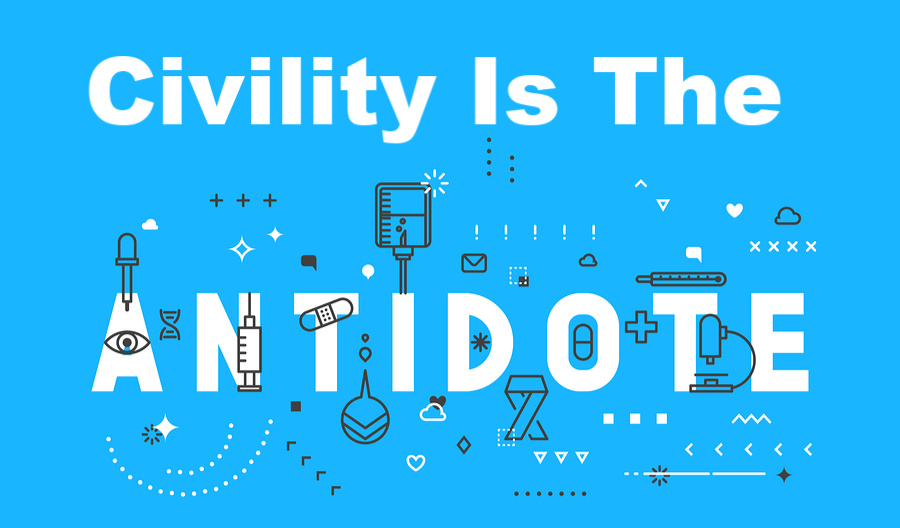Civility is a Way We Treat Each Other
How would you define civility in your workplace?
More specifically, how civil is it?
I ask because I view workplace incivility as the gateway to bullying and harassment.
Today I want to discuss the specific signs to watch out for, along with the actions you can take to better ensure a healthy workplace.
A Lesson in Civility
But first, a story…I promise there’s an important lesson tucked within.
A few years ago, I was managing Emergency Preparedness for the New Westminster Police Department. This happened to be in 2009 during the horrible H1N1 pandemic—a virus that ultimately took more than 3,300 lives around the world.
As an organization, we made plans to continue providing ‘essential service’ levels of policing to our community. In order to do this, we had to make sure our staff (and our family members) stayed healthy and available to serve the public.
What did we do?
We Posted Signs
All over the station we posted signs about knowing the symptoms of H1N1, as well as reminders on how to prevent the spreading of the virus, such as:
· Clean hands thoroughly and frequently with soap and water or alcohol-based hand rub, especially after contact with the eyes, nose or mouth
· Avoid touching your eyes, nose, and mouth
· Avoid handling soiled tissues or objects used by an ill person
· Cover coughs and sneezes with a tissue or with your sleeve; throw the tissue in the trash after use and clean your hands
· Make sure that you get your Influenza immunization
Provided Staff with Tools
To help our staff stay healthy, we issued protective equipment to everyone, such as: N95 particulate nose and mouth masks, eyeglasses, nitrile gloves, and hand sanitizer bottles.
Additionally, we positioned hand washing stations at easily accessible points throughout the workplace. No one had an excuse to be careless.
Delivered Training
Along with tools and signage, we armed our staff with education about how deadly the H1N1 virus was, and the importance of behaving in a healthy and responsible way.
Held Each Other Accountable
We reminded staff that if they saw one of their colleagues behaving in an unhealthy way (walking past a hand washing station, not coughing into their sleeve, etc), they had a responsibility to encourage healthier behavior.
Ensured Supervisors, Managers, and Leaders Modeled Healthy Behaviour
Of course, if our leaders weren’t held accountable, then why should the rest of the staff be? That’s why we ensured that every supervisor continually spoke about and modeled healthy habits.
Okay, my story is over, but what was that lesson I tucked in there?
Well, the steps we took to keep our workplace physically healthy can be easily applied toward mental health in your own workplace. An environment free from incivility, bullying, and harassment.
Steps to Civility in the Workplace
So, let’s look back on those lessons and translate them to a psychologically safe workplace.
Post Signs
Here are some guidelines to post around your workplace to remind staff to remain healthy:
- Greet and acknowledge each other
- Say please and thank you
- Acknowledge the impact of our behavior on others
- Welcome feedback from each other
- Be approachable
- Offer direct, sensitive, and honest communication
- Acknowledge the contributions of others
- Respect each other’s time commitments
- Address incivility
- Treat each other equally and with respect, no matter the conditions.
Provide Staff with Tools
Let your staff know about your Bullying and Harassment policy. Additionally, they should know about the procedures to follow when things aren’t going so well.
Deliver Training
A hard copy of the policy isn’t enough, you must also provide your staff with appropriate training.
Within this training, tell them WHY a psychologically healthy and civil workplace is so important. Go through the legislation, procedures, and best practices. During this time, you should also discuss how to have those “difficult conversations” with co-workers.
Hold Each Other Accountable
Just as our staff was on the lookout for unhealthy behavior, so should yours. Remember the Incivility Test? Are any of these prevalent where you work?
- Neglect to say please and thank you
- Use email when face-to-face communication is needed
- Take too much credit for our collaborative work
- Email or text during meetings
- Keep people waiting needlessly
- Talk down to others
- Delay access to information or resources
- Use jargon even when it excludes others
- Pass the blame when you’ve contributed to a mistake
- Spread rumors
Do You Find People Are Still
- Belittle others non-verbally (roll eyes, smirk, etc.)
- Shut someone out of a team meeting
- Pay little attention or show little interest in others’ opinions
- Don’t listen
- Show up late or leave early without explanation
- Insult others fail to acknowledge
- Make demeaning or derogatory remarks to someone
- Take others’ contributions for granted
- Forget to include others
- Speak unkindly of others
- Write uncivil or rude emails
Ensuring Supervisors, Managers, and Leaders Model Healthy Behaviour
This lesson goes without saying—but, that is exactly why I feel the need to say it!
It starts at the top. As leaders, you must not tell people how to behave, you must show people.
Although it may not seem on par with H1N1, bullying and harassment can indeed become a pandemic in the workplace. Negativity can become contagious, and easily spread throughout the office if not handled with the importance it deserves.
Oh, by the way…
Even though the H1N1 scare is over in New Westminster, we left the hand washing stations in place, we left the signs up, and we continued to talk about best practices—all to reinforce the lessons that we have shared.
So, let’s take that as my last lesson.
Just because you may not suffer from bullying and harassment right now, it doesn’t mean you should stop demonstrating polite behavior and delivering regular training.
Remember: Emphasising those healthy habits on an ongoing basis is what keeps your workplace healthy…not despite them.






